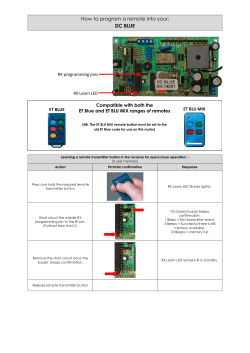
Difference between passive and active buzzers
What is the difference between Passive and Active Buzzers Passive Buzzer Uses a digital IO pin, which must be pulsed on-off as a square wave up to about 5KHz. The module may use a transistor to provide some amplification of the sound, in which case it will require power from the Arduino board. With a "passive" device or speaker, you have to send it an AC "sound signal" and you can control the sound. The Arduino needs to generate the "tone". With enough hardware and software you could make it play musical notes. The only downside (besides a bit of extra programming) is that it takes processor-time to generate the sound. This could be an issue if your program (sketch) is doing lots of other things at the same time. A piezo speaker can be driven directly from the Arduino (probably with a series resistor). A regular (voice coil) speaker takes more current and it needs an amplifier (transistor). Passive buzzer height of 8mm Active Buzzer An active buzzer can operate as a passive buzzer using a digital IO pin, but it can also operate by using an analog pin (using analogwrite). The buzzer stays on once the signal is written (keeps playing, unlike a passive buzzer which stops when the signal stops). An "active" buzzer generates the sound itself. So, you can simply turn it on & off with an Arduino pin, just like you turn on & off an LED. However, most buzzers require a bit more current so you'll need a MOSFET to boost the current/voltage. Active buzzer height 9mm To determine if an active buzzer and passive buzzer 1. 2. 3. 4. 5. Use a multi-meter set to resistance Black lead to buzzer "+" pin Red lead back and forth on another pin If this triggers sound, and the resistance is 8Ω (16Ω) it is a passive buzzer If this triggers a continuing sound, and the resistance is more than hundreds of Ohms, it is an active buzzer An active buzzer directly connected to the rated power will be continuously audible whilst the passive buzzer and electromagnetic speaker will need to be connected all the time to the audio output circuit to generate sound.
© Copyright 2025










